HISTORY LESSON in 4th grade "HISTORY OF MONEY"
SKLYAROVA NATALIA ANATOLYEVNA

HISTORY OF MONEY
The first money was not at all like the one we are used to.
In some places, cattle was considered money; in others, salt, grain, tobacco, bird feathers, sea shells, copper bracelets, cotton fabrics, and even dried fish served as money.

HISTORY OF MONEY
In Mexico, the Indians used cocoa beans.
In Canada, in Siberia, in the forest regions of Russia - "fur" money - the skins of fur animals.
The natives of the Maldives in the Indian Ocean have cowrie shells. Shiny, light, durable, small, they appeared in many countries of Asia, Africa and Europe thanks to Arab merchants.

HISTORY OF MONEY
People tried a lot of "money" until they came to metal money. But we would not have recognized this money either: they were in the form of bars, rings, half rings, twigs, plates, ingots. They were made of silver, gold, copper.
Metal money could be easily divided by cutting off the necessary pieces, and, if necessary, again merged into a single ingot.

HISTORY OF MONEY (For the curious)
"Coin" is a Latin word. It appeared in ancient Rome. According to legend, the goddess Juno warned the Romans about earthquake –
canopy. As a sign of gratitude, they erected -
a temple and dedicated it JUNONE MONETE
"Moneo" - I warn, I warn .

MONEY IN RUSSIA
At first, our ancestors, as elsewhere, used cattle or furs as money, most often squirrels, sables, martens and other
"soft junk"

MONEY IN RUSSIA
The Russian word "pay" comes from the word « canvas." This is a reminder that a very labor-intensive fabric also served as money in some regions of Ancient Russia.
She knew Ancient Russia and cowrie shells. They were brought by overseas merchants who traded with Novgorod and Pskov. In Russia they were called "snake's head", and they served as a small bargaining chip.

MONEY IN RUSSIA
Russia developed its own monetary system.
The monetary unit was kuna (marten fur)
Nogaty - part of the skin, the paw of the animal.
25 kuna were one hryvnia .

MONEY IN RUSSIA
Hryvnia - a silver ingot;
takes its name from the neck, nape.
The hryvnia was called a neck decoration

MONEY IN RUSSIA
For smaller calculations, pieces of silver had to be cut off. These cut off pieces are called rubles . From them our currency got its name.
Rezans – trimmings of silver-
coins.

MONEY IN RUSSIA
Coins in Russia have been minted since the end of the 10th century. At the beginning of the XIII century, Russia suffered a big misfortune: the invasion of the Tatar-Mongols. Many cities were destroyed, trade stopped. Coinage ceased until the 14th century.

MONEY IN RUSSIA
Coinage resumed under the prince Dmitry Donskoy .
The silver coin of Dmitry Donskoy was called "money".
This name comes from the name
eastern coin "tanga".

MONEY IN RUSSIA
At Ivan the Terrible began to mint coins of the same type.
The coin depicts horseman with spear. They got the name "penny money". From them came the name "penny".

MONEY IN RUSSIA
The minting of new coins began Peter I . The coins acquired the correct round shape and the same thickness.
Under Peter I the decimal system was established in Russia:
10 kopecks = 1 dime
10 hryvnias = 1 ruble

Probably each of you dreams of collecting a collection of coins.(For the curious)

P A R T I M O N E T S(For the curious)
REVERSE
OBVERSE
GURT - edge, side of the coin
LEGEND - inscriptions on coins

PROVERBS ABOUT MONEY
- There is no ruble without a penny.
- Money without legs, and the whole world will bypass.
- It is not easy to make money, but it is easy to live.
- Tears flow through gold.
- You can't buy mind with money.
- Easy money does not live.
- Health is more valuable than money.
- Someone's ruble is crying, but my penny is jumping.
- Do not have a hundred rubles, but have a hundred friends.

CROSSWORD "Items-Money"
- Horizontally:
- Vertically:
2) Home…..
5) Furs - soft ...

CROSSWORD "Items-Money"
- Horizontally:
- Vertically:
2) Home…..
5) Furs - soft ...

Money
Performed: student 3 "A" class
MBOU secondary school No. 3 st. Novokorsunskaya
Nebet Valeria
Scientific adviser:Fomina M.V.


Money - it is one of the greatest human inventions.
The origin of money is associated with 7 - 8 thousand BC

- money- metal and paper signs, which are a measure of value in the sale and purchase, a means of payment and an object of accumulation.
- Russian word " money» came from the Turkic "tenge" .
- Tenge - originally a small silver, and then a copper coin in the countries of the East.



This is what the first (commodity) money in Russia looked like.
skin grain shark tooth
bird feathers cowrie shells livestock




For many peoples in tropical Africa, New Guinea, the slave was the unit of value and payment.
Spears, dog teeth, pieces of limestone and even pig tails were used as "money".


D engi is a commodity , acting as a universal equivalent, reflecting the value of all other goods.



Coins - the banknotes having the form and weight content established by the law.
In Russia, coinage began to be minted in the 9th - 10th centuries.



Under Catherine II, instead of expensive metal money, cheap paper money began to be issued on the model of Europe.
In mid-1917, new money appeared. These were Kerenki.

In 1922, the Soviet government issued special bank notes - "Chervonets".

- medium of exchange
- means of accumulation
- Instrument of payment
- The measure of value
- Function of world money

Monetary units
Monetary unit of the country - a banknote legally established in the country, the main element of the country's monetary system
Euro - single European currency
The ruble is the monetary unit of Russia.
Dollar - US currency

Pound sterling - British currency
The Swiss franc is the monetary unit of Switzerland
Peso is the currency of Bolivia
Litas - the monetary unit of Lithuania

Electronic money is money or government bonds exchanged electronically only. Typically, this includes the use of computer networks, the Internet, and payment cards.
Electronic money is divided into two types:
- based on smart cards(examples: Visa Cash, Proton, Mondex, CLIP)
- network based(examples: WebMoney, Yandex.Money, Single Wallet, PayPal, e-gold, Rupay, Rapida.)


To use the preview of presentations, create a Google account (account) and sign in: https://accounts.google.com
Slides captions:
HISTORY OF THE ORIGIN OF MONEY Brief history of Russian money Neustroeva O.V.
SINCE ANCIENT TIMES, THE SLAVIANS HAVE USED VARIOUS OBJECTS FOR BUYING AND SELLING GOODS. ONE OF THE MOST COMMON FORMS OF MONEY IN ANCIENT RUSSIA WERE COWRY SHELLS.
In the VIII - IX centuries. DIRHEM APPEAR IN RUSSIA - LARGE SILVER COINS WITH ARABIC SIGNS. DIRHEMS WAS MINUTED IN THE ARAB CALIFATE, AND FROM THERE THE ARAB MERCHANTS BROUGHT THEM TO THE TERRITORY OF KIEVAN RUSSIA.
AT THE END OF THE 10TH CENTURY IN KIEVAN RUSSIA THE MINING OF OWN GOLD AND SILVER COINS BEGINS. SREBRENIK - THE FIRST RUSSIAN COIN. THE FIRST RUSSIAN COINS WERE SO CALLED ZLATNIK AND SREBRENIK.
AFTER Fragmentation, in the XII CENTURY, MONGOLO-TATARS ATTACKED RUSSIA. IN THE TREASURES OF THESE AGES, BAGS OF PRECIOUS METALS OF DIFFERENT FORMS ARE FOUND.
COINS OF THE PERIOD OF Fragmentation The first Russian ruble is an elongated piece of silver weighing approximately 200 grams, roughly chopped off at the ends. He was born in the XIII century. At that time, the ruble was equal to 10 hryvnia kunas. From here came the Russian decimal monetary system, which still exists today: 1 ruble = 10 hryvnias; 1 hryvnia = 10 kopecks.
COINS OF NOVGOROD-SEVERSKY PRINCIPALITIES
DIVISION OF THE RUBLE INTO SMALL MONEY. Only in the middle of the XIV century, dividing the ruble hryvnia into two parts, they received half, into four - quarters. Small coins were made from the ruble - money. To do this, the ruble hryvnia was pulled into a wire, chopped into small pieces, each of them was flattened and a coin was minted.
COINS OF THE RUSSIAN STATE Under Ivan III, Russia became a single state. Now every prince could not independently mint his own coins. The head of the state was the monarch, only he had the right to do so.
CREATION OF A SINGLE MONETARY SYSTEM. In 1534, during the reign of Elena Glinskaya, mother of Ivan the Terrible, a single monetary system was created for the entire state. On the money of small weight, made of silver, a rider with a sword was depicted. On money of large weight, also silver, a rider was depicted with a spear in his hands. They were called penny dengas. These were our first pennies. They were irregular in shape and the size of a watermelon seed. The smallest coin was "polushka". It was equal to a quarter of a penny (half money). Before Tsar Fyodor Ivanovich, the year of issue was not put on Russian coins. This king was the first to stamp the date on a penny.
KOPEK OF THE TIMES OF IVAN THE TERRIBLE
GRADUALLY, RUBLE BAGS DISAPPEARED FROM CIRCULATION. MONEY IN RUSSIA COUNTED INTO RUBLES, BUT THE RUBLE AS A COIN DID NOT EXIST, THE RUBLE REMAINED ONLY A CONDITIONAL UNIT OF ACCOUNTS. Trial ruble Alexei Mikhailovich
COINS OF IMPERIAL RUSSIA IN MARCH 1704, ON THE DECREE OF PETER I, FOR THE FIRST TIME IN RUSSIA, SILVER RUBLE COINS BEGAN TO BE MADE. SIMULTANEOUSLY, THEY RELEASED 50, HALF 50, HUME EQUAL TO 10 KOPEKS, A PIECE WITH THE SIGN "10 MONEY" AND ALTYN. Altyn
ALTYN The name "altyn" is Tatar. Alti means six. The ancient altyn was equal to 6 dengas, the Petrovsky altyn - 3 kopecks. Silver is many times more expensive than copper. For a copper coin to be as valuable as a silver coin, it must be made very large and heavy. Since there was a shortage of silver in Russia, Catherine I decided to make just such copper money. It was calculated that the ruble coin should have a weight of 1.6 kilograms.
OBEYING THE ROYAL ORDER, THE COINERS MADE A COPPER RUBLE. THIS IS A LARGE QUADRANGULAR PLATE, 20 CENTIMETERS WIDTH AND LONG. IN EACH CORNER OF IT IS A CIRCLE WITH THE IMAGE OF THE STATE EMBLEM, AND IN THE MIDDLE THE SIGN: "PRICE RUBLE. 1726. YEKATERINBURG". KOPEK OF THE TIMES OF PETER I
IN EXCEPT TO THE RUBLE, FIFTY AND HALF 50 AND HRYVNA WERE ISSUED. THEY ALL HAD THE SAME SHAPE AND WERE MANUFACTURED AT THE YEKATERINBURG MINT. THIS MONEY DID NOT EXIST FOR A LONG TIME. THEY WERE VERY INCOMFORTABLE. HALF 50
UNDER ELIZAVETH PETROVNA A NEW GOLD COIN OF 10 RUBLES WAS ISSUED. IT WAS CALLED IN ACCORDANCE WITH THE IMPERIAL TITLE OF THE QUEEN IMPERIAL. THERE WAS ALSO A SEMI-IMPERIAL - A COIN OF 5 RUBLES. Gold coin - Imperial
MONETARY SYSTEM Until the end of the 19th century, the Russian monetary system remained almost unchanged. By the end of the 19th century, Russia, like other countries, introduced gold money into circulation. The main currency was the ruble. It contained 17.424 parts of pure gold. But it was a "conditional ruble", there was no gold ruble coin. The imperial, the ten-ruble coin and the five-ruble coin were minted. Ruble coins were made from silver, 50, 25, 20, 15, 10 and 5 kopecks.
THE APPEARANCE OF PAPER MONEY Catherine II carried out the Minich project: instead of bulky copper money, in 1769 she issued paper banknotes in denominations of 25, 50, 75 and 100 rubles.
THE BEGINNING OF THE MONETARY SYSTEM OF THE USSR In August 1914, the world war began. Inflation has set in. In 1915, even the copper coin disappeared. Only paper money remained in circulation. In the same year, the last royal ruble was minted.
IN THE MIDDLE OF 1917, NEW MONEY APPEARED. THESE WAS KERNKI MADE ON BAD PAPER, WITHOUT NUMBERS AND SIGNATURES, IN DUENESS OF 20 AND 40 RUBLES. THEY WERE RELEASED IN UNCUT SHEETS, THE SIZE OF A NEWSPAPER.
STRENGTHENING OF THE MONETARY SYSTEM IN 1922 THE SOVIET GOVERNMENT ISSUED SPECIAL BANK TICKETS - "Chervonets".
STRENGTHENING OF THE MONEY SYSTEM In 1923, another step was taken towards strengthening the monetary system: banknotes of the newly created Union of Soviet Socialist Republics were issued. 1 ruble in these signs was equal to 1 million rubles issued before 1922, and to 100 rubles in 1922 money. In 1924, state treasury notes were issued in denominations of 1, 3 and 5 rubles.
PAPER RUBLE 1924
SILVER 50, 20, 15 AND 10 KOPEKS APPEARED. 5, 3, 2 AND 1 KOPEK CHANGING COIN WAS MADE FROM COPPER. IN 1925 THEY MADE A COPPER "POLOSHKA". IT EXISTED UNTIL 1928. IN 1931 SILVER CHANGING COINS WERE REPLACED WITH NICKEL COINS. Copper "half"
THE MONEY REFORM OF 1961 GAINED EVEN MORE IN THE PURCHASING POWER OF THE RUBLE AFTER THE MONEY REFORM OF 1961. FIVE KOPEKS 1961
MONETARY SYSTEM OF MODERN RUSSIA IN 1991-1993 in connection with political and inflationary processes, the collapse of the USSR and the formation of the CIS, individual denominations of bank notes of the USSR were replaced.
ON JANUARY 1, 1998 IN THE RUSSIAN FEDERATION THE MONEY REFORM (1000-FOLD DENOMINATION OF THE RUBLE) STARTED. Coins of the 1997 sample were put into circulation. In denominations of 1, 5, 10, 50 kopecks and 1, 2, 5 rubles, 10, 50, 100 and 500 rubles.
"ISSUE 2001". In 2001, modified banknotes in denominations of 10, 50, 100, 500 rubles were put into circulation, the banknotes bear the designation: "Issue of 2001". In 2004, they developed banknotes of a higher denomination. They were banknotes of 1000 and 5000 rubles of the 2004 sample.
MODERN MONEY SIGNS
THANK YOU FOR YOUR ATTENTION.
Economics presentation on the topic of: "The History of Money"
Economics teacher
GKOU VSOSH No. 7 of the Volgograd region Selezneva S.G.
2014


First money on earth
Dried Fish Buffalo Cowrie Shells
(Iceland) (India) (Primorye)
Salt (Africa) Feathers (Oceania) Tea (China)

What was the first money in the Russian state?
- The skins of animals served as money - arctic fox, squirrels, sable, martens, which
called Kuns.

Why did people switch to gold money and silver?
Pieces of gold
gold bars
Golden coins

Where and when did the first coins appear?
- In the ancient state of Lydia (located on the territory of modern Turkey)
- In the 7th century BC.
Herodotus mentions in his manuscripts the first Lydian coins of 687 BC. They were made from pieces of electra (a natural alloy of silver and gold). Electra was found in the mountain streams of Lydia. This alloy was heated to soften, placed on a plate and hammered. The image is embossed on one side of the blank and identifies them as coins.

Why is metal money called coins?
- In ancient Greece in the VIII century BC. in the temple of the goddess Juno-Coin there was the first mint.
- In honor of the goddess Juno-Coins, pieces of gold and silver with chasing began to be called coins.

What is a coin?
- A coin is a banknote made of metal on which a pattern is depicted by chasing
- Obverse - the front side of the coin
- Reverse - the reverse side of a coin
- Edge - the edge of a coin
Gold 5 rubles 1899
Gold 5 rubles 1899 reverse

What shape were the coins?
- In ancient China, there were coins of various shapes up to 60 cm in length.
money bells
money-keys
Money-shirts
money swords
money-fish
Money amulets

- The hryvnia is the first monetary unit in Russia in the 11th-13th centuries.
- Form Hryvnia - silver stripe or decoration up to 200 gr.

Where did the word ruble come from?
- From the word scar.
- When casting rubles, a seam from the mold remained on the metal ingot. This seam was called "rub" or "scar". "Ruble" is an ingot with a seam.

XIV century in Russia
They began to mint a small coin, which was called money

- In the XIV century, under Ivan III, a drawing of a horseman with a spear and a horseman with a saber was minted on a silver coin. From here came the names kopeck and saber.

- The coin has acquired the form of a regular circle
- A decimal monetary system was introduced, i.e. 1 ruble 100 kopecks.
- Issued money of different denominations from the ruble to the penny.

- China is the birthplace of paper money
- In 812

- In the middle of the 18th century under Catherine II

Where and when did plastic money appear?
- First plastic money
appeared in France
- invented in 1974 and
patented French
Roland Moreno.
- progenitor of plastic
money was cardboard and
metal cards
in the United States in the early twentieth century.

Types of money
commodity symbolic credit
Gold and silver in copper and nickel checks and credit
bullion and coins, coins and paper cards
as well as any money
goods at
barter deals

Stages of money development
- The appearance of money with the performance of their functions by random goods
- Consolidation of the role of the universal equivalent to gold
- Stage of transition to paper or credit money
- Gradual displacement of cash from circulation, as a result of which electronic types of payments appeared

- Numismatics is the science that studies money.


slide 1
History of money
slide 2

Target
Studying the history of the emergence of money to form students' interest in history and their past.
slide 3

Relevance
The relevance of the chosen topic lies in the fact that money is the most important attribute of the economy. The stability of the country's economic development largely depends on how the monetary system functions. The study of the nature of the origin and types of money, their main functions, the role of money in the country's economy is necessary to understand the functioning of the entire financial system.
slide 4

Tasks
Reveal the prerequisites for the appearance of money Consider the history of the appearance of money in Russia Determine the "place" of money in the modern world Analyze and summarize the knowledge gained
slide 5

Catalog of Internet resources
https://ru.wikipedia.org - a multilingual project, a complete encyclopedia in all languages of the Earth http://fb.ru - an information portal where full-fledged articles are published, divided into categories (economics, science, business, etc.) http: //infourok.ru - information portal containing a library of methodological materials (presentations, abstracts, video lessons) http://dic.academic.ru - dictionaries and encyclopedias on various topics http://www.money-gain.ru - information portal in world of money
slide 6

Event Plan
Goal setting, definition of lesson objectives What is money? How money appeared: the concept of “money” is defined, the main functions of money are considered The history of the emergence of money in Russia, the beginning of the production of coins: the origins of the first money and their varieties are determined USSR Types of money in the modern world: the main types of modern money are determined, as well as the possibility of determining the authenticity of money Summing up: based on the event considered, a general conclusion is formulated on the lesson
Slide 7

What is money?
Money is a specific commodity that is the universal equivalent of the value of other goods or services.
Functions of money
Instrument of payment
world money
Means of savings and accumulation
medium of exchange
The measure of value
Slide 8

The measure of value
The measure of value is formed when the price is formed; it determines the value of the goods, which is measured in money (ie, equating goods to each other). Thus, a quantitative comparison is obtained. The monetary measurement of value is the price.
Slide 9

medium of exchange
The monetary expression of the value of goods does not yet mean its realization. There must be an exchange. Money - intermediaries in the exchange from the beginning of the transaction to its completion.
Slide 10

Instrument of payment
It includes the function of the means of exchange and is transformed into the function of the means of settlement. This is facilitated by the use of plastic cards and other electronic payment instruments that allow paying by transfer from a bank account, as well as making wholesale and retail purchases.
slide 11

means of accumulation
Cash reserve (account balances, gold and foreign exchange reserves). Money, which performs the function of accumulation, participates in the process of formation, distribution, redistribution of the national income, and the formation of the population's savings.
slide 12

world money
Used in international payments. In a modern developed economy, there are three functions of money - a measure of value, a means of accumulation and a means of payment, and the medium of circulation remains very small.
slide 13

How did money come about?
Market relations began to take shape as early as the 7th-8th millennium BC. At that time, primitive people exchanged excess products with each other, and the proportions were established depending on the circumstances. With the advent of the social division of labor, barter gradually became uncomfortable, and our ancestors began to use various objects as money.
Slide 14

The history of the emergence of money in Russia
Kuns In ancient Russia, kuns were in circulation - leather money. It was the skin of a marten, hence the name.
Hryvnias In Kievan Rus, the minting of coins began under Prince Vladimir, but very soon ceased. The first coins of Russia - hryvnia, a small oblong ingot of silver.
slide 15

Start of coin production
At the end of the X century. in Kievan Rus begins minting their own coins of gold and silver. The first Russian gold coin was called zlatnik (zolotnik). On this ancient Russian coin with inscriptions in the Slavic language, Prince Vladimir Svyatoslavovich and the family coat of arms of the Rurikovich were depicted.
The first silver coin in Russia was srebrenik (silver coin). For the minting of silver coins, silver coins of the Arab states were used. Chasing took place in Kiev itself, under Prince Vladimir. The inscription on the coins of Prince Vladimir (980 - 1015) read: "Vladimir is on the table, and behold his silver"
slide 16

The evolution of banknotes in Russia
The first paper banknotes appeared under the rule of the Russian Empress Catherine II in 1769. They were very similar to bank receipts and were used to pay the salaries of officials. Although the bills were watermarked, numbered and texted, the print quality was poor, so counterfeiters were comfortable counterfeiting them.
Slide 17

The evolution of banknotes in Russia
It was necessary to replace all issued banknotes with more reliable ones, which is why after the war with Napoleon the history of money changed again. A new type of money appeared in 1818. They were decorated with ornaments in the Empire style and engravings. The year 1897 is characterized by the stability of the financial system, because paper money was easily exchanged for gold coins.
Slide 18

Monetary policy in the USSR
Gold monometallism existed in our country until 1914. After the outbreak of the First World War, banknotes were issued to cover the deficit of the state budget, which could not be exchanged for the precious metal. All types of coins completely went out of circulation, remaining the property of the population, but in Soviet times they again became a means of exchange. In 1922-1944, silver items (denominations of 10, 15, 50 kopecks, 1 ruble) and copper (1, 2, 3 and 5 kopecks) were produced.

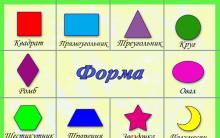
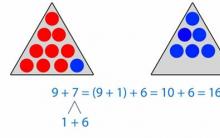
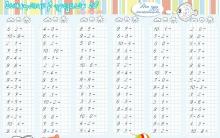
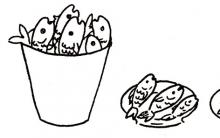
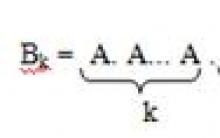
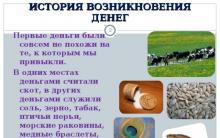




Map second language of geography
Literary games in elementary school Games for children in the library elementary school
Presentation "role-playing games in dow"
The green color on the physical map shows what the colors on the physical map represent
Intellectual game "through the pages of history"